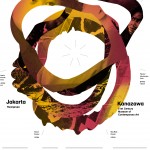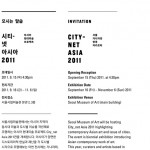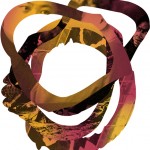ruangrupa @CITY-NET ASIA
http://seoulmoa.seoul.go.kr/citynet/eindex.jsp
ruangrupa goes to Korea!
CITY-NET ASIA 2011 PRESS RELEASE
SUBSIST
In Indonesian contemporary urban context especially in Jakarta, the source of ‘power’ is the state or corporate. As the will of god or nature, their hands are also so powerful, invisible, infinite, and most of the time it is difficult to predict. Everything designs and allocated towards economic growth, without attention to a social cultural aspect. As a city Jakarta also loses its social functions, in this case is the human potential of its inhabitants as a social being. The entire urban life has dominated by commercial space and of course the spaces where controlled by the ‘authorities’ – state and informal authorities. These issues often become the major source of disaster in the urban life of the city. In the last decade it has more complex layer in terms of economy, boundaries, and limitation of space in the city that rapidly changes. Through unsuitable designs/plans and public policies are became an urban disaster for public welfare, resulting social and economic gap, disoriented infrastructure, lack of public spaces and ecological calamity.
Disasters always cause loss and damage any society has built; in the urban context these words have extensive and complex meaning as it also means the loss and damage resulting from ignorance of design and policy. ‘Subsist’ shows how people find and manage the strategies to survive within all the state of destruction and catastrophic in the context of the urban environment. It will show how people organically and systematically react and deal within the innovation strategies of survival and also how the strategy and role of the artists and designers within the artistic practices. Furthermore it also shows how individuals and communities in the city managing their loss, damage, memories, passion and also dreams. It will map how the locality affects the strategy of survival, and how does the people survival strategies to face such condition of power-politics relations in societies and urban spaces.
All the works are project-based works and some of it still going on until now, it includes several process such as experimentation, research/mapping, innovation, sustainability, design, social and economic system, state bureaucracy, within urban space. ‘Subsist’ trying to expand our way of seeing the disaster and how people surviving not only from natural disasters by seeing it as a damage and loss of lives or elements that are very prevalent in the urban context.
Artists:
Agus Nur Amal, ruangrupa artlab, Urban Guerilla project, Ary Sendy, Reza Afisina, Hafiz, Indra Ameng, Iswanto Hartono, OK.Video Militia.
Curator:
Ade Darmawan
Iswanto Hartono
—
“PM TOH Museum”
Agus Nur Amal
2010
Selected objects from the PM TOH performance
Agus Nur Amal is a performing artists using Acehnese traditional story teller
‘PM Toh”. He use daily life objects in his performance. He did also series of touring for Aceh tsunami victim as a therapy for trauma. His performance is very optic, humorous, and very interactive for the audience. He always improvises spontaneously with the objects, and with the audiences.
+++
“Urban Guerilla Project”
2010
Vest, multifunction bag, interactive website concerning the network of the city streets
Gerilya Urban (Urban Guerilla) project, published by students of the 2010 elective Contemporary Architectural Design studio Department of Architecture, Tarumanagara University, compares the experience of public space in Jakarta to a battle zone and offers a number of guerilla tactics and strategies in order to ‘reclaim’ this space. The students observed, investigated, examined, and responded to real challenges born from the interaction between urban space and its inhabitants. In the process they show that architecture is essentially more about the art of spatial organization, and its relationship with human behaviour, than it is about buildings. The twelve projects shown here are architectural works in the broadest sense of the words. They come in various forms—a vest, a bag, a base for learning, a shelter for playing, a mini-pavilion, an interactive website concerning the network of the city streets.
+++
“Lonely Market”
ArtLab ruangrupa
2009
Installation, Map of temporary market in Jakarta, video
This art project intended to investigate the figures and economic transaction values in society, which influence mobility of specific people and location in the city. It will focus on how the transaction in particular communities works with alternative model outside the mainstream economic transaction, but in fact plays very important roles, such as transaction in (illegal) gambling, pirated DVD kiosks or garbage collectors.
The project furthermore include a regular small market simulation in ruangrupa space as well creating weekend bazaar with screening films outdoor for the public and in the neighborhood.
+++
“Stories from the city”
Indra Ameng
2003 – 2007
Starring: Rebecca, Heditya, & Sari
Photography, book, postcards
STORIES FROM THE CITY is a project consists of 12 stories about places and persons in the city of Jakarta. I took photographs of 20 places in Jakarta. There are business places and popular hang-out sites that already exist from the 30s, 40s, 50s until the 70s, and all these places were very popular in their era. Some of them became the landmark of Jakarta and have nostalgic value, also have a special place in the history of Jakarta. These places are: art space, cinema, restaurant, photo studio, football stadium, hotel, etc. Some of them still survive, and some still popular, but some also already vanished, went bankrupt, and being demolished.
Indra asked three of my friends; Rebecca, Heditya and Sari, as my model and icon that represent the younger generations to company me visiting these places, and posed for me in the front of these places.
After that Indra also made an interview with people that owned the place. It’s more like a chat with them, talking about their business and how they survive after all this year, or why the place went bankrupt or gone. From this project, he printed some posters, book and postcards as a series.
+++
“Traces of Homes”
Ary Sendy
2009 – 2011
Photography
One of programs released by Jakarta’s government in 2003 to resolve flood in the city is developing canals in eastern part of Jakarta. The canal’s project was planned to be finished in 2010. To make this project, city’s government should free the lands that consist of eleven big districts in East Jakarta and two big areas in North Jakarta. This project is known by citizens as BKT (Banjir Kanal Timur / East Canal).
Systematical eviction run for the sake of urban plan always creates some pattern of changes in the city that never seen before. I could discover various new forms created from spaces where its habitants had gone away. This urban phenomenon provokes many questions about the people that had lived and settled there, as well as how memory of every each room inside their houses that will be disappeared forever.
+++
“Haji Abbas Ali 33″
Iswanto Hartono
2011
Single channel Video
14 minutes
A story of a small old/secondhand watch/clock seller and repair in jakarta, who has been last for nearly 4 generation [ more than 100 years]. The video interview investigate on how the low economic system can survive the pressure of the global economic forces that has been crush on the indonesian market. Its been proofed that low economic system which created by the low income people to secure their business from the pressure of big capital in the country, not only survived, but even more stronger than the large capital investment when they faced the global economic crisis. Its involved a kinship relation, mutual social networks, and more surprisingly they have very honest and big dreams of idealism to built their country.
+++
“Gerobak bioskop (Cinema Wagon)”
ArtLab ruangrupa
2010 – 2011
multifunction bicycle, video screening equipments
Moving Cinema Wagon is a compact device, easy to move move (such as carts or can be fitted into another form that can be customized depending on needs), which can operate as a video playback device / mobile film. This device must contain all the equipment needed by a playback, such as: video projector, screen, the computer that contains the storage capacity, player, duplication in data format, dvd / vcd, simple sound device, and internet access (if possible).
This devices as a way to encourage the introduction of the foundation medium for watching movies / videos in public, and the device is also easy to use anywhere, especially places or areas far from the information center. and within this program put into growing awareness of the development of information and traditions of the community with a treat to watch on the viewing experience by other means.
The wagon were distributed to 10 cities/town in Indonesia, from Sumatera, Java, Bali, and Sulawesi, collaborating with diverse community and artists.
+++
“Alam Syuhada”
Hafiz
2005
Single channel video
9 minutes
Videoworks that elevates urban theme are numerous in the last ten years.
Some sees from the spaces and urban architecture, and some sees from the
people who reside in the city. Hafiz is one of many directors and video
artists who often elevate the urban problem and spaces in society from the
people who live in it. In video Alam:Syuhada, Hafiz is portraying someone
named Alam. This video consist of short interview with the character Alam
about his past and his dreams.
Alam:Syuhada uses an uncommon visual language. With a good
documentary technique, Hafiz perform an interview with Alam in a public
transportation in Jakarta. During the interview, city panoramas with various
visuals such as: vehicles, traffic jam, houses, people on the streets, and many
more, all captured in the video. In other layer, Alam’s interview present his
life in Jakarta. Alam told his past, love, his gang, his gambling problem,
religion and his dream to become a soldier.
Hafiz’s 2005 videowork is a phenomenon in the scene of Indonesian
short film. He uses the method of documentary with somewhat unusual
experimentation. The character, Alam, is deliberately speak about his life,
yet the viewers were unable so see him talk. In 2005, the video achieve
special award from the board of jurors of the Festival Film Indonesia
(Indonesian Film Festival). Alam:Syuhada also obtained a great attention
at the Oberhausen Short Film Festival in 2006, where it enter the
international competition. With the achievement of such a fine quality
audio visual, Alam:Syuhada is consider to be one the most important work
in the development of video art in Indonesia for the last ten years.
+++
“OK. Video Militia – video workshop compilation”
2007
16 selected video works from workshop in 12 cities
Total duration 96 minutes
The theme of the 3rd Ok. Video Festival is “MILITIA”, means to empowered the civilians in a more organize way or by plan so it also mobilize and connected with some activity that push some changes which is initiated from itself. In this context, we relate this theme with the development of video as the medium in the society today. With this focus we will try to empower the society as a technology and media user to build a social, political, cultural, and historical consciousness towards the reality that happened in our surroundings.
The Militia video workshops were in 12 Indonesian cities acrross Sumatera, Java and Sulawesi islands. The workshops resulted 125 video works that was also screened at the festival.
—









I would like to buy the catalogue of city – net Asia 2011, i’m an instructor at faculty of painting sculpture and graphic art silpakorn university, this catalogue will make a benefit for student to learn more experience.
pls tell me how can i get or buy it.
phatyos